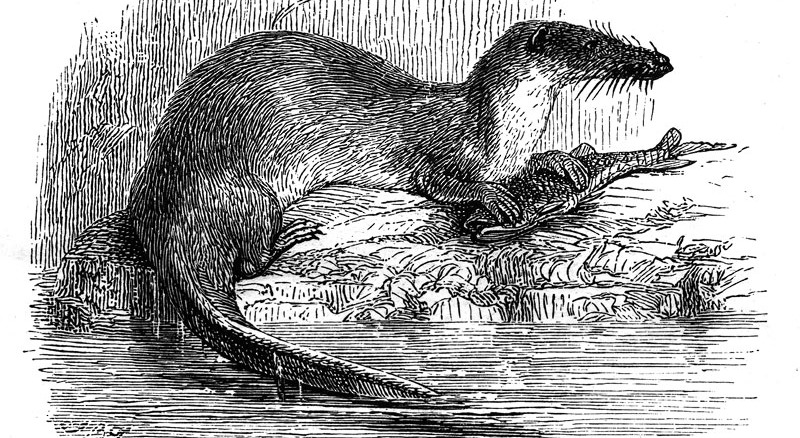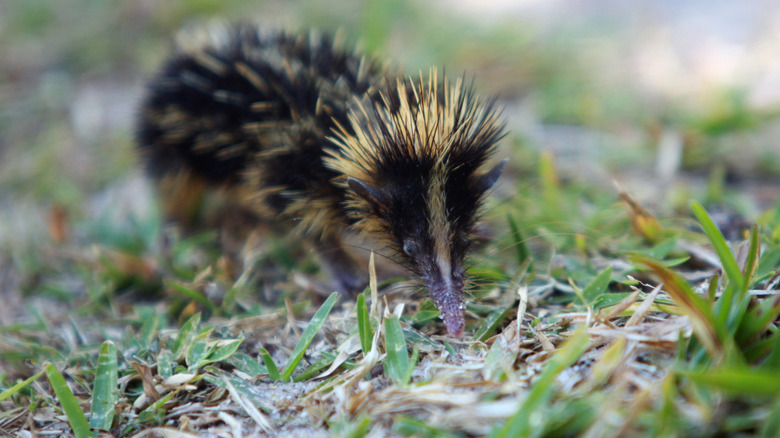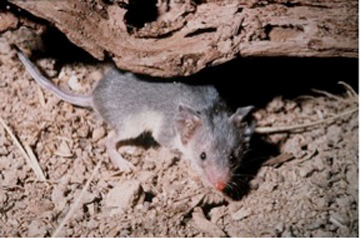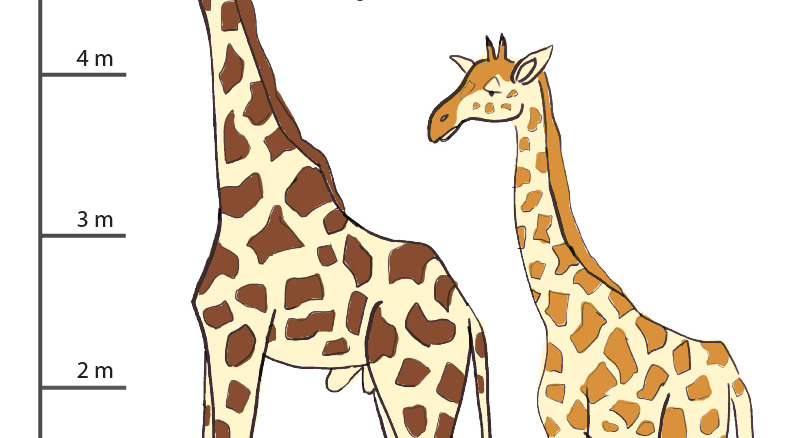When most people think of an iguana they probably picture a green iguana. The green iguana is native to Central and South America, but this iguana is now kept as a pet by people around the world.
A young green iguana:

However, there are many other species of iguanas that you may not be familiar with. There are marine iguanas in the Galápagos Islands – they are the only lizards that spend time in the ocean.
A marine iguana:

And then there are the rock iguanas that live in the islands of the Caribbean. There are 14 species of rock iguanas in the Caribbean. The smallest species is called the Turks and Caicos rock iguana.
Meet the Turks and Caicos rock iguana:

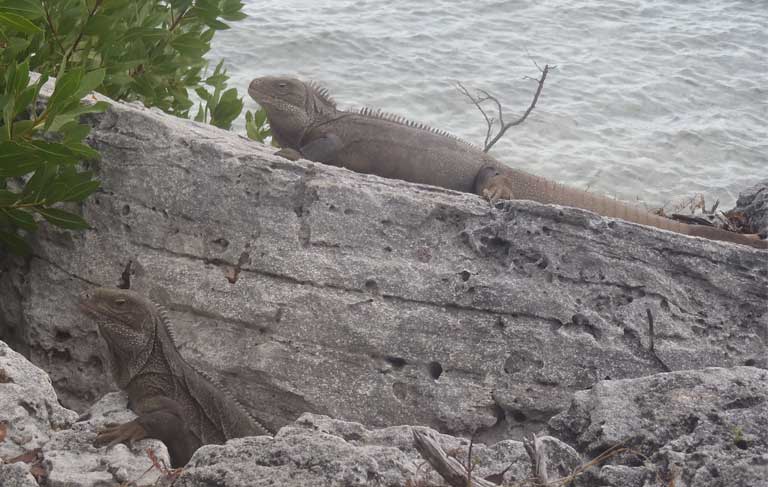
The Turks and Caicos Islands (TCI) are part of the Lucayan Archipelago, an island chain that includes the Bahamas.
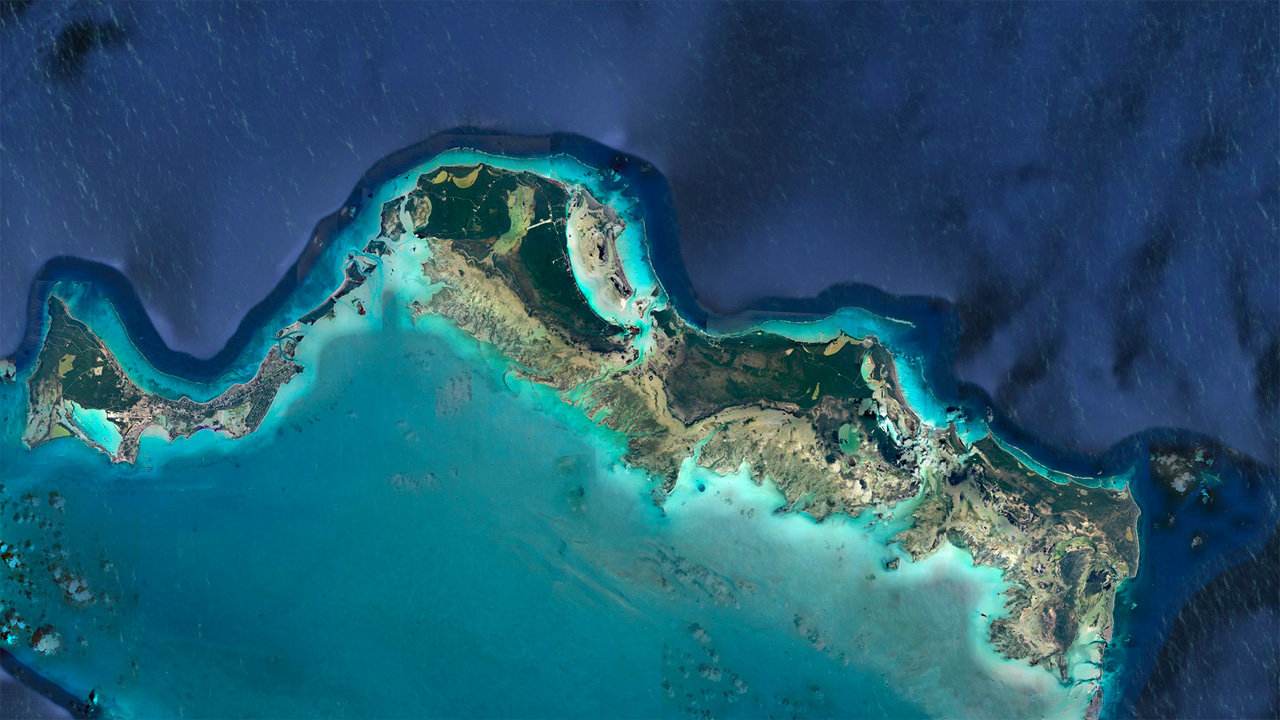
The Turks and Caicos rock iguana is the smallest species of rock iguana, measuring under 65 centimeters (26 inches) in length. Despite being the smallest rock iguana, it is the largest terrestrial (land) animal species on the islands where it lives.

The Turks and Caicos rock iguana feeds on over 100 species of native plants. The bulk of their diet is leaves from plant species growing on sand dunes. The iguanas also love fruit. Scientists have determined what the rock iguanas eat by examining the plant parts found in their droppings (poo).
The rock iguanas play an important ecological role in the Turks and Caicos Islands. Iguana stomachs are short-term seed storage for dune plants. Iguanas digest the fruit and other plant parts that surround seeds, and then spread them around sand dunes when they poop them out.

Seeds need to be planted, and the iguanas fill that role too. Turks and Caicos rock iguanas like sandy pockets along rocky shores where they excavate extensive burrows to retreat to at night. The movement of so much sand allows the seeds they deposit to be buried for germination.
Many of the native island plants on sand dunes depend on the iguanas to spread their seeds. This seed dispersal helps to maintain and expand the dunes. Plant roots hold loose sand in place and help the dunes resist high winds and storm surges (high waves created by storms).
Protecting the Turks and Caicos rock iguanas
About 30,000 adult Turks and Caicos rock iguanas remain today, scattered over 50 to 60 small islands and cays (small sandy islands created on coral reefs). Turks and Caicos rock iguanas are listed as Endangered on the IUCN Red List.

When Europeans arrived on the Turks and Caicos Islands, they brought with them rats, cats, and dogs. Turks and Caicos rock iguanas evolved with virtually no predators so they had no defenses against these introduced predators. Predation, loss of habitat, and changes in the native vegetation, were very damaging to the iguanas. After European colonization, Turks and Caicos rock iguanas were wiped out from nearly all the inhabited islands (where people live), along with some uninhabited cays.
The two largest iguana populations remain on Big Ambergris Cay, a four-square-mile island, and on the uninhabited and protected cays of East Bay Islands National Park. Though relatively stable, these populations are both still threatened by rat predation and other threats.
On the East Bay Islands feral cats and an invasion of Australian pine (Casuarina equisetifolia) are also damaging to the iguana population. The Australian pine spreads rapidly and pushes out the native food plants on which the iguanas depend.
The Turks and Caicos Islands government and Turks and Caicos National Trust are reintroducing the rock iguanas to cays where they had been historically wiped out. This effort requires fieldwork and public education about the rock iguana.
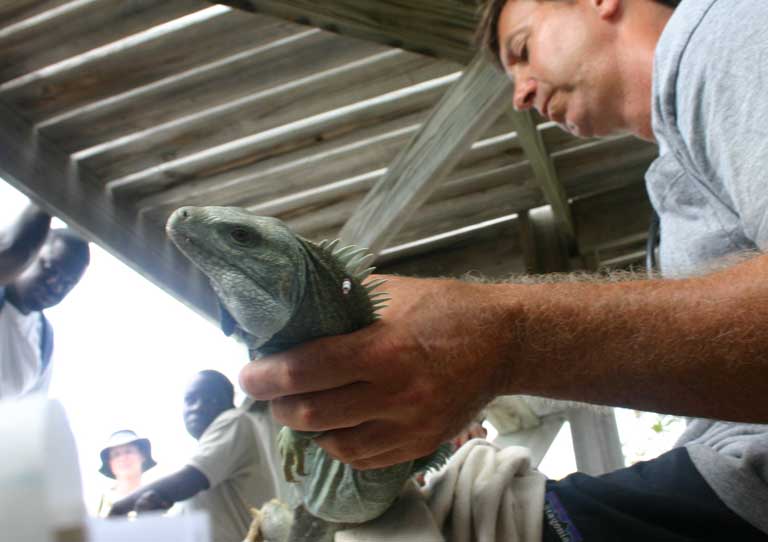
Successful reintroduction only happens with the support of the people who live around the iguanas. People have to make sure that the predatory mammals that wiped out the iguanas are removed and stay absent from reintroduction sites.
A successful public awareness campaign called “Iguanas Are Belongers Too” is presented in schools and churches across the Turks and Caicos Islands. This education program shows that the rock iguana is a Belonger, a traditional legal term for a citizen of the Turks and Caicos Islands.


